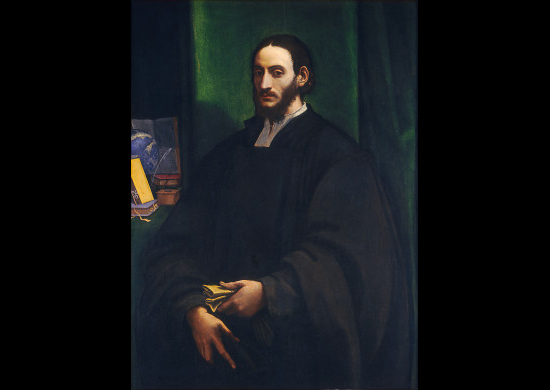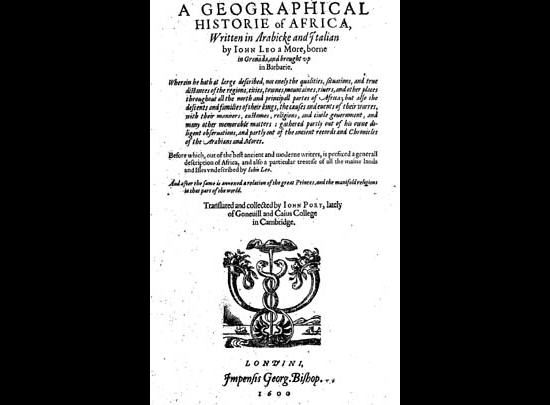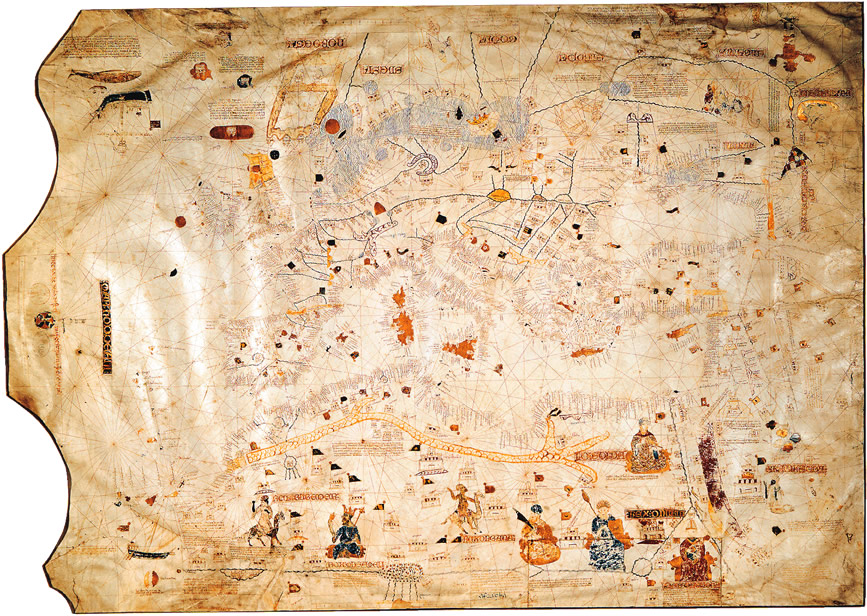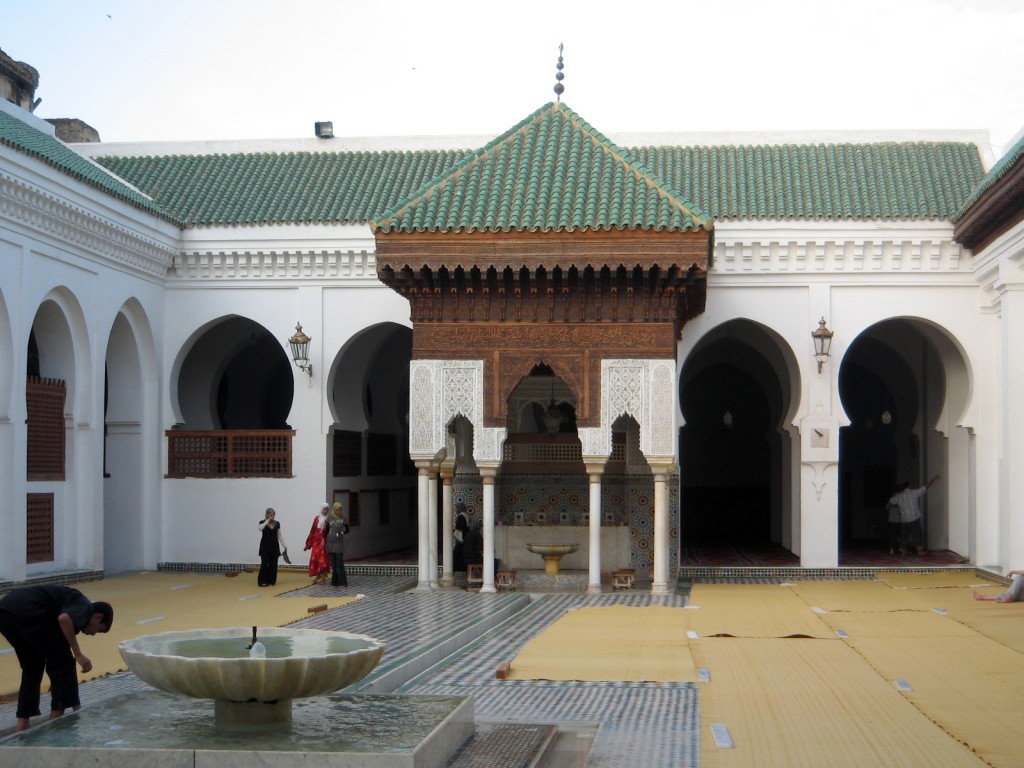Al-Hasan ibn Muhammad Al-Wazzan Al-Fasi, An elusive figure in history, just as he exploded onto the scene of Renaissance Europe, he vanished without a trace; his Cosmographia & Geographia de Affrica was Europe’s essential window into North and Sub-Saharan Africa for over 300 years.
“… I am now called the African, but I am not from Africa, nor from Europe, nor from Arabia. I am also called the Granadan, the Fassi, the Zayyati, but I come from no country, from no city, no tribe. I am the son of the road; my country is the caravan, my life the most unexpected of voyages.” Prologue, Leo the African, by Amin Maalouf.
According to some historians, Al-Hasan was born in Granada in 1494 CE, just two years after the Reconquista. Others are sticking to the safe side, maintaining that he was born between 1488 and 1494. However, according his own writings it seems he would have been born around 1488 CE. Not too long after that, his family, along with hundreds of Muslim families, relocated as refugees in Fez, fleeing the especially lethal persecution of the Spanish and their inquisition.

Portrait of a Humanist by Sebastiano del Piombo, c. 1520, assumed to be of Al-Hasan ibn Muhammad Al-Wazzan, known in the west as Leo Africanus.
His last name, Al-Wazzan, means the Weigh-master, indicates that they were a commercial family, heavily involved in trades and business. As with most children at the time, he was entered into the greatest centre of learning at the time, the madrassa of Al-Qarawiyyin. There he would have studied Qur’an and Fiqh (Islamic jurisprudence), as well as grammar, rhetoric, logic, medicine, mathematics, astronomy, chemistry, history, and geography. By the time he reached the tender age of 14 he had earned the title of Qadi (judge), while a student still he worked as a scribe for the local maristan – hospital/asylum.
At 16, he accompanied his uncle on what was to be his first of many diplomatic missions, to the great cities of Gao and Timbuktu, then part of the Songhai Empire, one of the largest Islamic empires in history, on behalf of the Wattasid Sultan Abu Abd Allah al-Burtuqali Muhammad ibn Muhammad. By his mid twenties he had been on missions to North Africa and the Barbery Coast, Istanbul, Arabia, Sub-Saharan Africa and Egypt. He had also extensively covered the Maghreb, both coastal and inland. Source. He meticulously recorded everything he witnessed and during his diplomatic mission in Istanbul, he met with Ottoman Sultan Suleiman the Magnificent.
Capture and Conversion
Upon his return from Istanbul (Constantinople) sometime in 1518, his ship was captured in Greek waters by the fleet Knights of St. John commanded by Pedro Bodiviglia, brother to the bishop of Salamanqua (in Spain), and a high ranking Knight. Recognizing him as a learned man, and seeing his potential, he was presented to Pope Leo X in Rome, in an event that was chronicled alongside other high-profile events on the Vatican calendar that year, becoming an instant celebrity. Source.
A matter that is highly debated among Leo historians is the matter of his conversion, while western historians see him a willing convert who was given a gentle invitation by the pope, while their Arab counterparts completely refuse that theory altogether and provide that it was just a matter of survival.
What probably happened was that his choice was very simple: convert and be part of the papal court, or rot in a dungeon for the rest of your life. The best analysis comes from M. Hajji, who studied Leo and traced his legacy for 50 years, in his Introduction to Wasf Ifriquia “Realizing that he could not live as a Muslim in Italy, he deceptively converted to Christianity (…), a decision we can understand as: “ Whoso is forced to disbelieve after believing, while his heart is convinced of the Faith, (he shall be absolved) but whosoever accepts disbelief willingly, he incurs Allah’s wrath, and there is severe torment for all such people. {Al-Nahl: 106}“*. Source. It was a strategy that meant the survival for many Moriscos (a forcibly converted Muslim) during the Reconquista.
Some riddles might never be solved in our lifetime, or maybe ever. Only Allah knows the sincerity of Al-Hasan’s heart, and whether he converted out of self preservation, or wholeheartedly. Only Allah knows. We only assume the best in his heart and hope that when he died, he did so as a Muslim.
He was baptised by the Pope himself two years after his arrival in Rome in 1520, and was christened after the Pope himself, Johannes Leo de Medicis, as a gesture of high favour. The Pope himself died a year later, and Al-Hasan found himself fleeing to Bologna from the new unfriendly Pope Adrian VI, where he taught Arabic in the University of Bologna and worked on several books, all lost except the Cosmographia & Geographia de Affrica, which he finished in 1526 shortly after returning to Rome under the protection of the newly elected Pope Clement VII.
Cosmographia & Geographia de Affrica
This magnificent encyclopaedia of Africa was written in nine volumes; an introduction with a general descriptions of the geography of Africa, its climate, and the characteristics of its inhabitants and their mannerisms. The next seven volumes concentrated on seven regions, each with its own book: The Kingdom of Marrakech, The kingdom of Fez, The Kingdom of Tlemcen, The kingdom of Tunis, the region of Numidia, Sub-Saharan Africa and the Sudan, and Egypt. The ninth volume of the book is dedicated to the rivers, flora, and fauna of Africa.

Title page of Johannes Leo Africanus; John Pory (trans. & comp.) (1600). A Geographical Historie of Africa, Written in Arabicke and Italian. ... Before which... is Prefixed a Generall Description of Africa, and... a Particular Treatise of All the... Lands... Undescribed by J. Leo... Translated and Collected by J. Pory. London: George Bishop
The work was published in Italian with the title Della descrittione dell’Africa et delle cose notabili cheiui sono, per Giovan Lioni Africano in 1550 by the Venetian publisher Giovanni Battista Ramusio. Source. With several translations following the next 50 years, in French, Latin, and one English in 1600. Unfortunately the Latin edition contained many errors and mistranslations, and was used as the source for the English translation. There is speculation that Al-Hasan served as the model for William Shakespeare’s character Othello, published in 1603. Source.
In 1931, while rummaging through the archives of the Vatican and the National Library, Mrs. Angela Codazzi discovered a manuscript which she attributed to Leo. An Italian scholar working in Rome, Mrs. Codazzi found the document among uncatalogued (unidentified) documents in the Biblioteca Nationale de Roma. The discovery revealed that Ramusio, in smoothing the grammar of Al-Wazzan’s text had coloured many neutral details, to make it more palatable to Christian European audiences; French and English translators added further embellishments. Source. Source.
Legacy
Sometime during or after the sack of Rome in 1527 at the hands of Charles V, the Holy Roman Emperor, Al-Hasan, under the cover of havoc and chaos, slipped away back to North Africa, his home. In 1531, German orientalist Johann Albrecht von Widmanstetter, mentioned that he intended to visit the great Arab scholar in Tunis, he mentioned in the preface of his book, Evangelica Syriaca, In the preface to this work, he alluded to the fact that he had returned to Tunis and to Islam after Rome.

This portolano map, drawn in the early 15th century for Charles V, shows the trading empires of sub-Saharan Africa, through which Leo traveled. Below: Leo’s diplomatic missions took him ultimately to Constantinople, where he met with Ottoman Sultan Süleyman the Magnificent. BIBLIOTHEQUE NATIONALE, PARIS / BRIDGEMAN-GIRAUDON / ART RESOURCE.
Whether he returned to Tunis in specific or some other region of North Africa, it is agreed that he died a Muslim, sometime after 1550.
Al-Hasan Al-Wazzan was the first to open up a land that was so mysterious to Medieval Europe; he fuelled their imaginations, and made their world a little bit smaller. And because of that, to this day, the name Timbuktu conjures up a world of exotic lands and riches beyond the wildest of imagination.
“The rich king of Timbuktu hath many plates and sceptres of gold, some whereof weigh 1300 poundes and he keepes a magnificent and well furnished court,”
At 14 he was a judge, and at 16 he went on his first diplomatic mission, and was a full-fledged ambassador before his mid 20s! He was an exceptionally complex diplomat and geographer, in his writings he relayed facts in an unusually neutral manner, and excelled as an ambassador. How much has a life of convenience and luxury taken away from us and from our children.
*مَن كَفَرَ بِاللَّهِ مِن بَعْدِ إِيمَانِهِ إِلَّا مَنْ أُكْرِهَ وَقَلْبُهُ مُطْمَئِنٌّ بِالْإِيمَانِ وَلَٰكِن مَّن شَرَحَ بِالْكُفْرِ صَدْرًا فَعَلَيْهِمْ غَضَبٌ مِّنَ اللَّهِ وَلَهُمْ عَذَابٌ عَظِيمٌ (النحل: 106)
For more information about Leo Africanus please visit:
www.leoafricanus.com/index.html
http://said.hajji.name/en/book-leo.html (English-Arabic-French)
http://www.saudiaramcoworld.com/issue/200801/a.man.of.two.worlds.htm
http://arabcomments.blogspot.com/2007/01/blog-post_194.html (Arabic)










Trackbacks for this post